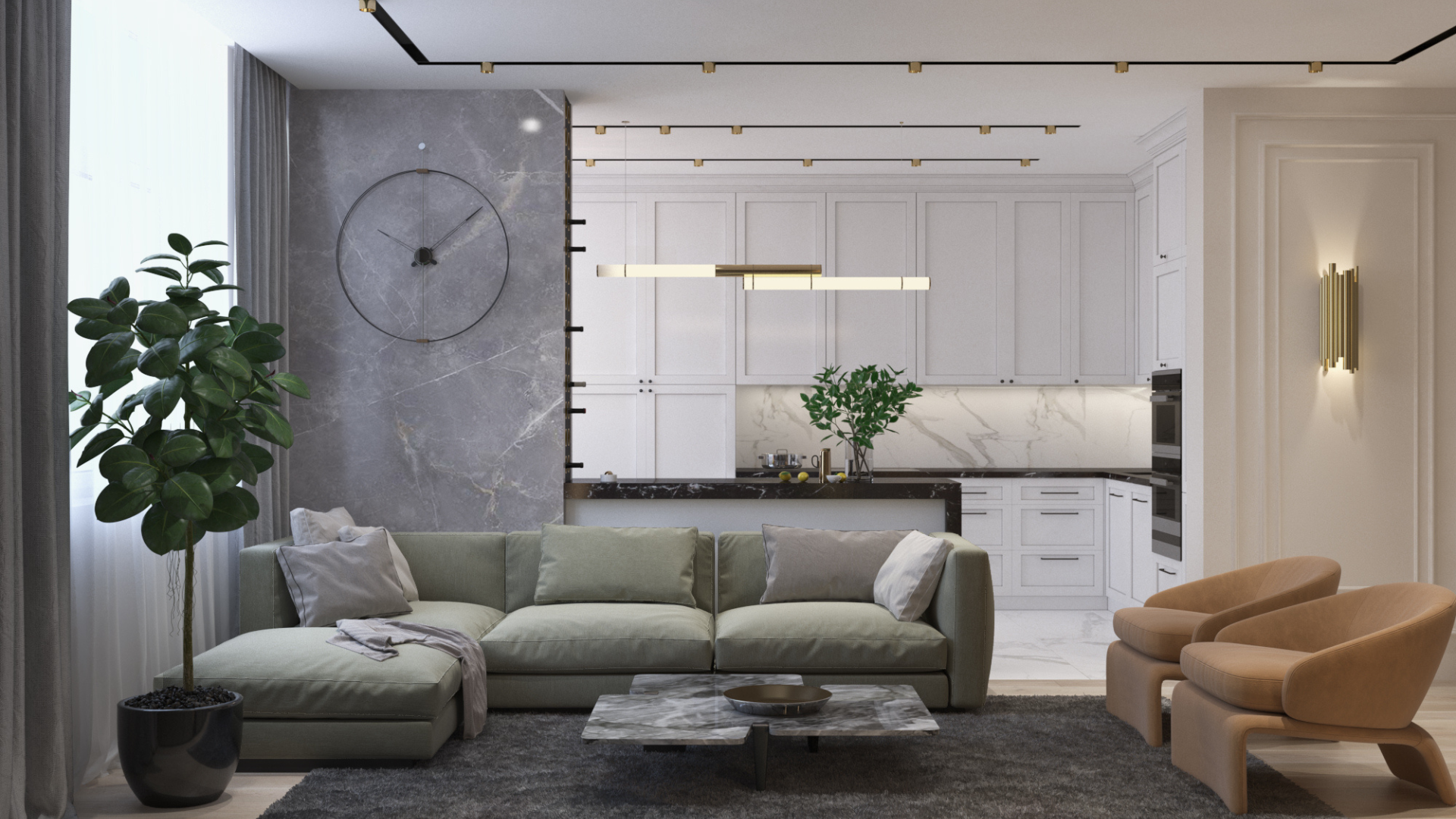
During the war, the level of stress among Ukrainians reached a particularly high level. We need to work with this condition in a comprehensive and systematic way, but we should not neglect auxiliary methods. For example, interior design at home or at work has a significant impact on our psychological state and can help reduce stress levels. Vadym Ziuziuk, founder and director of Znak Design, spoke about what “stressful” elements to pay attention to in the space and how to improve the emotional state with the help of interior design in his column on Liga.net.
Chronic fatigue, increased anxiety, decreased performance, depression, apathy, etc. are the conditions that have increased their impact on Ukrainians during the war. There are various ways to help yourself, such as doing breathing exercises, getting outdoors more often, and seeing a therapist. Interior design in the space where we spend a lot of time is a less obvious way to reduce stress, but in fact, there are many elements that subconsciously affect our psyche, and this is worth using to our advantage.
Cubic and rounded spaces and shapes vs. corridor and sharp: which are conducive to fatigue relaxation?
Perhaps the most unobvious aspect is the shape of the premises, furniture, and decor. Firstly, it is important that the space is as close to cubic as possible, as this is where people feel most comfortable.
The opposite is the corridor-type space. A room that has an elongated shape subconsciously provokes you to move and run somewhere. To overcome fatigue, mentally relax, and reduce stress, you need to cut off the factors that stimulate unnecessary movements and create a sense of “well here and now.” Corridor planning is not conducive to this.
Secondly, it is worth choosing rounded shapes of furniture, decor, and other elements that fill the space, as well as adding irregular, asymmetrical shapes. The results of an experiment by students at Oregon State University showed that curved furniture shapes evoke more pleasant states (comfort, peace, tranquility, etc.) than straightforward ones. This is due to the fact that we recognize natural and organic shapes that surround us. Sharp objects, on the other hand, can be associated with pain or discomfort.
This works even on a physiological level: for example, one study showed that objects with sharp corners caused significantly more activation of the amygdala (a brain region) than objects with rounded corners. Its main function is to process stimuli that cause fear, anxiety, and aggression. In other words, these states arise when we see angular shapes.

To help reduce anxiety and calm down, it is better to choose spotlights that highlight individual areas of the space. Bright overhead lights, on the other hand, can quickly tire and increase irritation, so it’s best not to turn them on for a long time. It is good if you can install a dimmer and adjust the brightness.
The temperature of the lighting is also important, and it is better to use warm lighting at home and in places of rest. It relaxes and gives a sense of security, reminiscent of fire, which we have been fond of for thousands of years, since the time when the hearth provided warmth, protected us from wild animals, and was a home.

The third element in interior design that can positively affect the emotional state is tactile sensations. For example, fabrics and furniture with a soft texture that is pleasant to the touch. In addition to the physical perception of textures, there is also a visual one, when we understand what the material is like (soft and pleasant or hard and sharp) without even touching it. And it also evokes certain sensations. For example, curtains and the comfort that arises when they are present in the interior.

Natural materials and colors: do they help to harmonize the emotional state
For many people, being outdoors calms them down and helps them find their inner balance. Natural materials in the interior, such as wood, stone, live plants, etc., of course, cannot replace a walk in the fresh air, but they will still work as a reminder of the outdoors. They add coziness, help you recover from the hustle and bustle of the city, reduce stress, improve your mood, and so on, and this is confirmed by various studies.
As for colors, to relieve stress, you should add more warm pastel shades and greenery to the interior. They also remind you of a friendly natural environment, help you get a sense of serenity and tranquility. And to create a more uplifting mood, you can include brighter and more saturated accents.
However, you should be careful with active colors. If there are too many of them in the interior, it will not contribute to rest and recovery. In particular, red, purple and their shades have a strong psychological impact. If you build your home interior on them, it will tire your senses and, on the contrary, increase stress.
So take a closer look at your interior, it’s quite possible that you can quickly and easily change something in it to help you relax and reduce anxiety.
